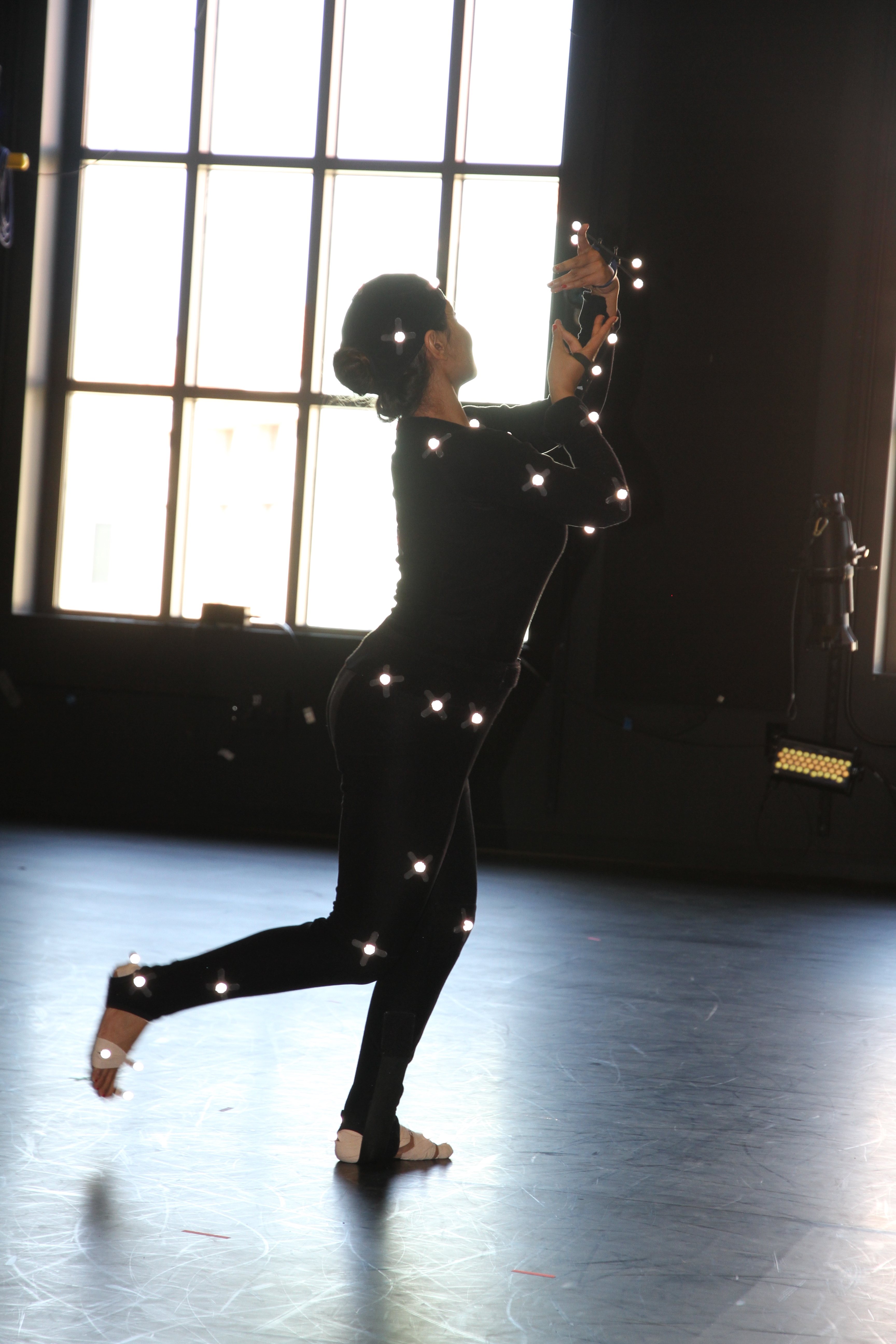Odissi Across Media | 1 | 2 | 3 | 4 |

To reorient the audience to a dancing Odissi body infused with the soma of the historical Mahari, I deconstruct the textual overlay of the multimodality via theoretical analysis, choreographic practice, and technological mediation. Theory and practice across embodied and technological means allow this dance experiment to pay attention to access to digital writing scholars who are primarily cultural outsiders. My collaborative experimentation with Erin complements my technological deconstruction because both speak to questions regarding access to multimodal narrative, gesture, and culture. Erin's webtext design allows me to conceptually foreground the dancing body in my practice-based research exercise. Her organization of my multiple iterations and their philosophical and theoretical inspirations and outcomes helps the lay audience to have access to the dynamic processes defining my creative practice. Access is central to my experimentation since it gives me embodied access to the historically marginalized Mahari, questioning her conventional construction as mute. Accessing Mahari agency through her embodied creativity complicates the textual basis of Odissi history and performativity. The historical formulation of Odissi dance as a 2,000-year-old movement tradition instrumentally deploys the Mahari or the temple-dancer to establish cultural continuity while simultaneously constructing her as timeless, mythical, and voiceless without any artistic contribution.
The postcolonial reconstruction of Odissi in the 1950s as a nationally recognized Indian classical dance form prioritized textual linkages to the ancient and medieval Hindu religious manuscripts (Natyasastra, Abhinaya Darpana, and Abhinaya Chandrika) while disregarding the embodied contributions of the Maharis as historical practitioners of Odissi.
Judith Butler's (2014) idea of the citational break of gesture throws light on the performative meaning of digital iterations. How does gesture communicate? Butler argued that in order to be efficacious, gesture draws from a social and linguistic infrastructure. Butler recognized the citational character of gesture that repeats what has come before and is supported by an existing linguistic infrastructure. For example, the act of waving the hand for gesturing "good-bye" requires the prior acceptance of its deployment for legibility. This gesture, while drawing its efficacy from its citationality and given infrastructure, also has the potential to break away from its conventional deployment. Butler found such a break in gestural deployment in Brechtian theatre where she noted that the citational break decomposes the linguistic gesture. Following Butler's citational decomposition of gesture in western theatrical performance, the digitized Odissi bodies access the somatic dimensions of the historical Mahari via a decomposition of canonical gestures of the classical Indian aesthetic vocabulary. The linguistic citations of the classical gestures question the ease of reading embodiment in live dancing. Choreographic manipulation of gesture across technological and theoretical registers of experimentation intervene in the embodied potential of communicability, especially through the efficacy of gesture.